Acupressure
How to submit an article:
- Registered users can submit any published journal article that has a unique DOI (Digital Object Identifier) name or link to Research Hub.
- For example, you can paste the full DOI link:
https://doi.org/10.1109/5.771073or just the DOI name:10.1109/5.771073into the field above and click submit. - The person who is first to submit a valid article to Research Hub will forever be credited for it, and every article submission earns you +6 Research Points.
Related Topics
Published research studies are articles that present the findings of original research that has undergone a peer-review process and has been made publicly available in scholarly journals, books or other media.

Acupuncture for chemotherapy-associated insomnia in breast cancer patients: an assessor-participant blinded, randomized, sham-controlled trial
2023 Apr 26 Breast Cancer Research Zhang J, Qin Z, So TH, Chang TY, Yang S, Chen H, et al.
The active acupuncture regimen, combining needling into body acupoints and acupressure on auricular acupoints, was not superior to sham control in reducing the Insomnia Severity Index (ISI) score from baseline to 6 weeks. However, it produced short-term treatment and long-term follow-up better outcomes in improving sleep onset latency, total sleep time, sleep efficiency, anxiety, depression, and quality of life. Participants in the active acupuncture group had a higher cessation rate of sleeping medications than the sham control, indicating that acupuncture could be an effective option for managing chemotherapy-associated insomnia and serve as a tapering approach to reduce the use of sleeping medications in breast cancer patients.
Randomised Controlled Trial Chemotherapy-Associated Insomnia Acupuncture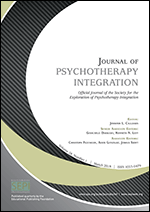
Integrating the manual stimulation of acupuncture points into psychotherapy: A systematic review with clinical recommendations.
2023 Mar Journal of Psychotherapy Integration Feinstein D
The article concludes that although further research is needed, the growing evidence base documenting the effectiveness, speed, and durability of the approach appears promising.
Systematic Review Psychotherapy
Safety and Acceptance of Acupuncture and Acupressure in Children, Adolescents, and Young Adults Undergoing Hematopoietic Stem Cell Transplant
2022 Dec 01 Cancer Nursing Bettini E, Idiokitas R, Mahmood L, Jacobs S, Steinhorn D
This study demonstrates that acupuncture and acupressure are well accepted by children and their families admitted for hematopoietic stem cell transplant (HSCT) and are safe even when performed in the first 4 weeks following transplant when the patient is likely to have thrombocytopenia.
Cohort Study Children's Health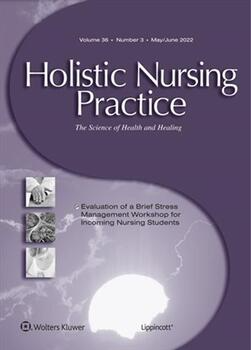
Auricular Acupressure for Improving Sleep Quality in Patients With Lung Cancer
2022 Jul Holistic Nursing Practice Lu HB, Ma RC, Yin YY, Song CY, Yang TT, Xie J
Our review suggests that auricular acupressure is effective and relatively safe in improving sleep quality among patients with lung cancer.
Systematic Review Meta-Analysis Ear Acupuncture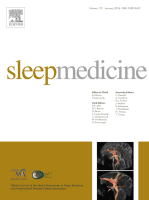
Comparative effectiveness of multiple acupuncture therapies for primary insomnia: a systematic review and network meta-analysis of randomized trial
2022 May Sleep Medicine Lu Y, Zhu H, Wang Q, Tian C, Lai H, Hou L, et al.
Systematic Review Meta-AnalysisMultiple acupuncture therapies, particularly acupoints catgut embedding, auricular acupressure + manual acupuncture, and electroacupuncture + acupoint application, significantly improve insomnia symptoms.
Research insights are moderated by the Research Hub team and offer an at-a-glance overview of interesting research findings.

2022 Sleep Medicine
Multiple acupuncture therapies, particularly acupoints catgut embedding, auricular acupressure + manual acupuncture, and electroacupuncture + acupoint application, significantly improve insomnia symptoms.
Systematic Review
Comparative effectiveness of multiple acupuncture therapies for primary insomnia: a systematic review and network meta-analysis of randomized trial
Lu Y, Zhu H, Wang Q, Tian C, Lai H, Hou L, et al.
2021 Journal of Trauma Nursing
Auricular acupressure may be a safe and effective technique for reducing burnout and secondary traumatic stress in healthcare workers.
Randomised Controlled Trial Burnout Mental Health
Effects of Acupuncture and Acupressure on Burnout in Health Care Workers: A Randomized Trial
Afrasiabi J, McCarty R, Hayakawa J, Barrows J, Lee K, Plouffe N, et al.

2021 Evidence-Based Complementary and Alternative Medicine
Moderate-quality evidence revealed an association between acupressure and greater pain relief compared with physical therapy.
Systematic Review Low Back Pain
Clinical Efficacy and Safety of Acupressure on Low Back Pain: A Systematic Review and Meta-Analysis
Tao Li , Xiaohui Li ,Fan Huang , Qiang Tian , Z. Y. Fan , and S. Wu
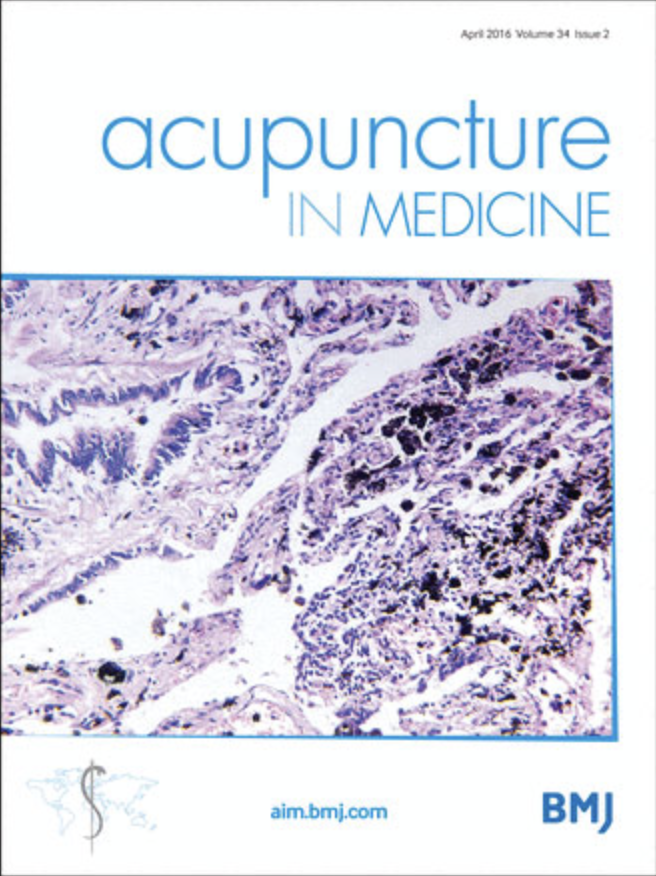
2020 Acupuncture in Medicine
Acupressure offers promising pain relief and shorter labor duration during childbirth.
Systematic Review
Acupressure for labor pain management: a systematic review and meta-analysis of randomized controlled trials
Chen Y, Xiang XY, Chin KHR, Gao J, Wu J, Lao L, et al.
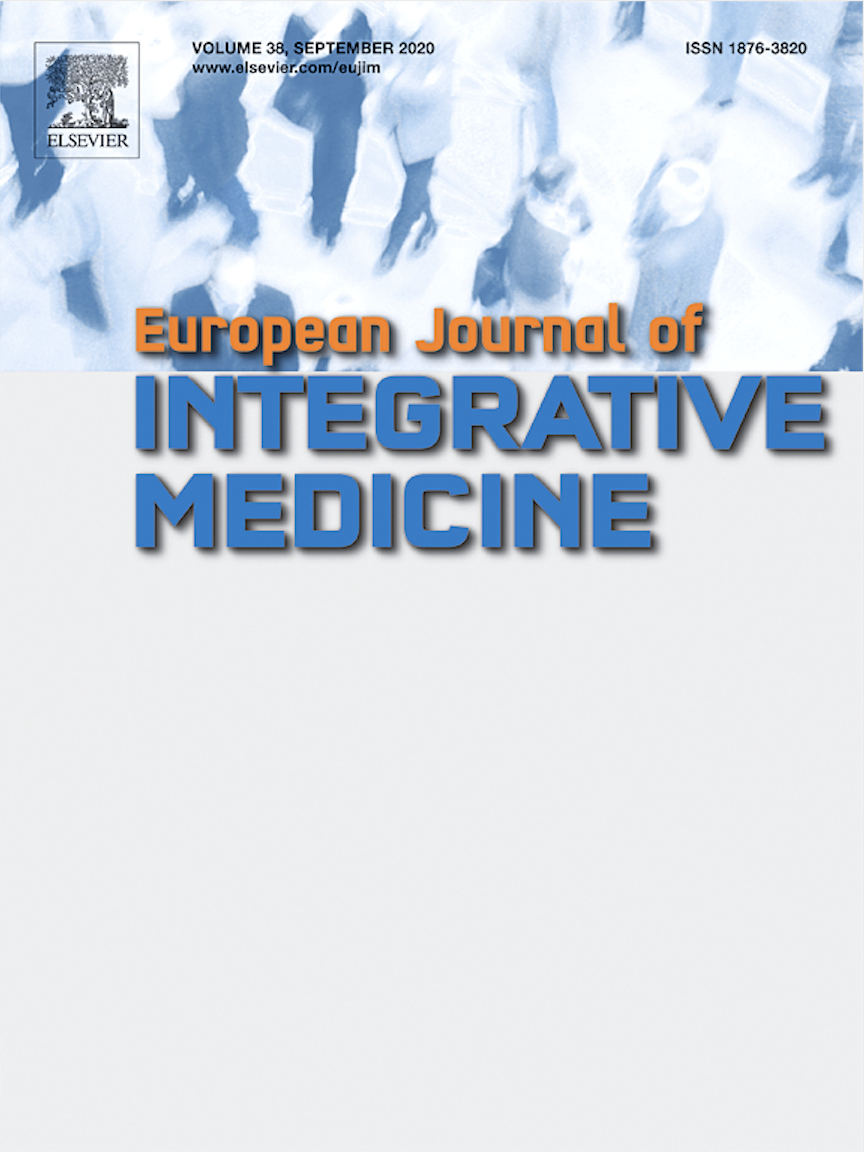
2020 European Journal of Integrative Medicine
Auricular acupressure combined with acupuncture showed the highest effectiveness in reducing post-hemorrhoidectomy pain.
Systematic Review Ear Acupuncture Postoperative Pain
Acupuncture and related techniques for postoperative pain after hemorrhoidectomy: A systematic review and network meta-analysis
Qin D, Zhang AM, Chen M, Tang TC, Du YJ, Zheng H
Review Articles
Review articles summarise and critically evaluate the current state of research on a specific topic or field by synthesising multiple primary research studies.

Integrating the manual stimulation of acupuncture points into psychotherapy: A systematic review with clinical recommendations.
2023 Mar Journal of Psychotherapy Integration Feinstein D
The article concludes that although further research is needed, the growing evidence base documenting the effectiveness, speed, and durability of the approach appears promising.
Systematic Review Psychotherapy
Auricular Acupressure for Improving Sleep Quality in Patients With Lung Cancer
2022 Jul Holistic Nursing Practice Lu HB, Ma RC, Yin YY, Song CY, Yang TT, Xie J
Our review suggests that auricular acupressure is effective and relatively safe in improving sleep quality among patients with lung cancer.
Systematic Review Meta-Analysis Ear Acupuncture
Comparative effectiveness of multiple acupuncture therapies for primary insomnia: a systematic review and network meta-analysis of randomized trial
2022 May Sleep Medicine Lu Y, Zhu H, Wang Q, Tian C, Lai H, Hou L, et al.
Systematic Review Meta-AnalysisMultiple acupuncture therapies, particularly acupoints catgut embedding, auricular acupressure + manual acupuncture, and electroacupuncture + acupoint application, significantly improve insomnia symptoms.

Auricular Acupressure Therapy for Patients with Cancer with Sleep Disturbance: A Systematic Review and Meta-Analysis
2021 Oct 14 Evidence-Based Complementary and Alternative Medicine Wang Y, Zhang J, Jin Y, Zhang Q
Auricular acupressure can significantly improve the sleep quality of cancer patients with sleep disturbance, with no obvious side effects.
Systematic Review Meta-Analysis Ear Acupuncture
Clinical Efficacy and Safety of Acupressure on Low Back Pain: A Systematic Review and Meta-Analysis
2021 Feb 25 Evidence-Based Complementary and Alternative Medicine Tao Li , Xiaohui Li ,Fan Huang , Qiang Tian , Z. Y. Fan , and S. Wu
Systematic Review Meta-Analysis Low Back PainModerate-quality evidence revealed an association between acupressure and greater pain relief compared with physical therapy.
Clinical Trials
Clinical trials are research studies that involve people and are conducted to evaluate the safety and efficacy of new treatments or interventions, such as drugs, medical devices, or behavioural therapies.

Acupuncture for chemotherapy-associated insomnia in breast cancer patients: an assessor-participant blinded, randomized, sham-controlled trial
2023 Apr 26 Breast Cancer Research Zhang J, Qin Z, So TH, Chang TY, Yang S, Chen H, et al.
The active acupuncture regimen, combining needling into body acupoints and acupressure on auricular acupoints, was not superior to sham control in reducing the Insomnia Severity Index (ISI) score from baseline to 6 weeks. However, it produced short-term treatment and long-term follow-up better outcomes in improving sleep onset latency, total sleep time, sleep efficiency, anxiety, depression, and quality of life. Participants in the active acupuncture group had a higher cessation rate of sleeping medications than the sham control, indicating that acupuncture could be an effective option for managing chemotherapy-associated insomnia and serve as a tapering approach to reduce the use of sleeping medications in breast cancer patients.
Randomised Controlled Trial Chemotherapy-Associated Insomnia Acupuncture
Feasibility of self-administered acupressure for allergic rhinitis: a pilot randomized controlled trial and lessons learnt for future studies
2021 Nov 12 Acupuncture in Medicine Liang Y, Lenon GB, Li M, Yang AWH
Acupressure is feasible and appears to be safe for self-administration by AR sufferers. Experience from this pilot study has guided minor amendments to the protocol. A large-scale randomized controlled trial is warranted to further investigate the efficacy and safety of self-administered acupressure for the management of AR.
Randomised Controlled TrialEffects of Acupuncture and Acupressure on Burnout in Health Care Workers: A Randomized Trial
2021 Nov Journal of Trauma Nursing Afrasiabi J, McCarty R, Hayakawa J, Barrows J, Lee K, Plouffe N, et al.
Randomised Controlled Trial Mental Health BurnoutAuricular acupressure may be a safe and effective technique for reducing burnout and secondary traumatic stress in healthcare workers.
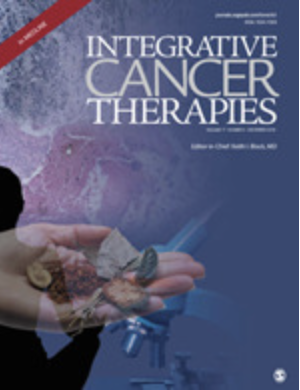
Electroacupuncture Plus Auricular Acupressure for Chemotherapy-Associated Insomnia in Breast Cancer Patients: A Pilot Randomized Controlled Trial
2021 Jan Integrative Cancer Therapies Zhang J, Qin Z, So TH, Chen H, Lam WL, Yam LL, et al.
Acupuncture demonstrated significant improvements in the Insomnia Severity Index (ISI) scores, total sleep time, Pittsburgh Sleep Quality Index (PSQI) scores, Hospital Anxiety and Depression Scale (HADS) depression scores, and Functional Assessment of Cancer Therapy-Breast Cancer (FACT-B) scores compared to the wait-list control group. The study suggests that acupuncture is safe, feasible, and effective for chemotherapy-associated insomnia in breast cancer patients, warranting further confirmation through a larger sample size randomized clinical trial.
Randomised Controlled Trial
Effects of self-acupressure on pregnancy-related constipation: A single-blind randomized controlled study
2020 Jul 25 Explore: The Journal of Science & Healing Ayça Şolt Kirca,Derya Kanza Gül
This study's evidence indicates that self-administered acupressure can effectively alleviate the symptoms of constipation in clinical practice during pregnancy.
Randomised Controlled TrialStudy Protocols
Published study protocols are detailed plans that outline the objectives, methodology, statistical analyses, and organisation of a research study that have been made publicly available for others to review and use as a reference.

Efficacy and safety of acupuncture combined with auricular acupressure for smoking cessation: A study protocol of a multicentre, randomized, controlled clinical trial
2022 Jul 27 Frontiers in Neurology Zeng J, Liao Y, Wei X, Chen G, Cai Z, Chen M, et al.
This study will provide rigorous clinical evidence evaluating the efficacy and safety of using A&AA as a smoking cessation therapy.
Study Protocol Ear Acupuncture
Acupressure for insomnia
2018 Nov Medicine Wu DJ, Dong HC, Tang TN, Zhu SF
This systematic review will provide evidence for assessing the improvement of acupressure for insomnia.
Study Protocol AcupressurePresentation Slides

Systematic Review
Multiple acupuncture therapies, particularly acupoints catgut embedding, auricular acupressure + manual acupuncture, and electroacupuncture + acupoint application, significantly improve insomnia symptoms.
Lu Y, Zhu H, Wang Q, Tian C, Lai H, Hou L, Liu Y, Gao Y, Liu M, Yang F, Ni X, Lin L, Niu J, Tian J, Ge L

Randomised Controlled Trial
Auricular acupressure may be a safe and effective technique for reducing burnout and secondary traumatic stress in healthcare workers.
Afrasiabi J, McCarty R, Hayakawa J, Barrows J, Lee K, Plouffe N, Schomberg J

Systematic Review
Moderate-quality evidence revealed an association between acupressure and greater pain relief compared with physical therapy.
Tao Li , Xiaohui Li ,Fan Huang , Qiang Tian , Z. Y. Fan , and S. Wu

Systematic Review
Acupressure offers promising pain relief and shorter labor duration during childbirth.
Chen Y, Xiang XY, Chin KHR, Gao J, Wu J, Lao L, Chen H

Systematic Review
Auricular acupressure combined with acupuncture showed the highest effectiveness in reducing post-hemorrhoidectomy pain.
Qin D, Zhang AM, Chen M, Tang TC, Du YJ, Zheng H

Systematic Review
Acupuncture and acupressure for labor pain.
Caroline A Smith,Carmel T Collins,Kate M Levett,Mike Armour,Hannah G Dahlen,Aidan L Tan,Bita Mesgarpour
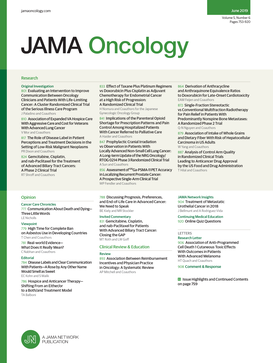
Systematic Review
Acupuncture and/or acupressure was significantly associated with reduced cancer pain and decreased use of analgesics.
He Y, Guo X, May BH, et al.

Systematic Review
Acupuncture may reduce overall mood and physical PMS symptoms when compared to sham. Acupressure may reduce the number of women having moderate to severe PMS symptoms when compared to sham acupressure.
Armour M, Ee CC, Hao J, Wilson TM, Yao SS, Smith CA
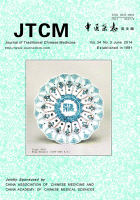
Systematic Review
Stimulating acupoints had positive effects on childhood cough variant asthma and was a relatively safe treatment.
Jin Yutong, Chen Shan, Xuan Lihua

Systematic Review
Acupuncture has similar efficacy compared to pharmacotherapies for acne vulgaris, however acupuncture interventions reported less adverse effects and may be a treatment option.
Mansu SSY, Liang H, Parker S, Coyle ME, Wang K, Zhang AL, Guo X, Lu C, Xue CCL
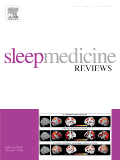
Systematic Review
The results showed that even fragile populations such as the elderly and dialysis patients can benefit from acupressure to improve sleep quality.
Alexander Waits, You-Ren Tang, Hao-Min Cheng, Chen-Jei Tai, Li-Yin Chien

Systematic Review
Acupuncture and acupressure show potential for improving cervical readiness and certain birthing outcomes, their impact on reducing caesarean section rates remains inconclusive.
Smith CA, Armour M, Dahlen HG
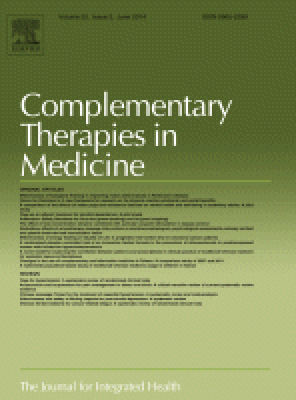
Systematic Review
SP6 acupressure's effectiveness for primary dysmenorrhea relief, indicating trained personnel-administered acupressure reduced pain immediately and up to 3 hours post-intervention
Abaraogu UO, Igwe SE, Tabansi-Ochiogu CS

Systematic Review
The review found limited consistent evidence supporting the effectiveness of acupuncture for relieving menstrual pain compared to sham treatments or other interventions.
Smith CA, Armour M, Zhu X, Li X, Lu ZY, Song J

Systematic Review
Acupressure seems to be effective in providing immediate relief of pretreatment anxiety among adults, and has a medium effect size.
Au DWH, Tsang HWH, Ling PPM, Leung CHT, Ip PK, Cheung WM

Systematic Review
Acupressure showed evidence of pain relief while acupuncture improved both the mental and the physical components of quality of life associated with primary dysmenorrhea.
Abaraogu UO, Tabansi-Ochuogu CS
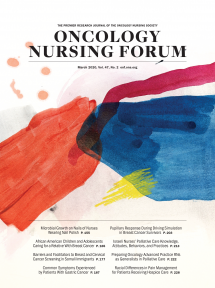
Systematic Review
Although results are inconclusive, acupuncture and acupressure tend to be effective in relieving cancer related fatigue, with the former producing a greater improvement.
Ling WM, Lui LY, So WK, Chan K.

Systematic Review
Our findings suggest that acupressure at the SP6 acupoint may provide more effective pain relief than that of control treatment.
Chen MN, Chien LW, Liu CF

Systematic Review
Limited evidence supporting the benefit of acupressure in alleviating menstrual pain and reducing symptoms.
Jiang H, Ni S, Li J, Liu M, Li J, Cui X, Zhang B
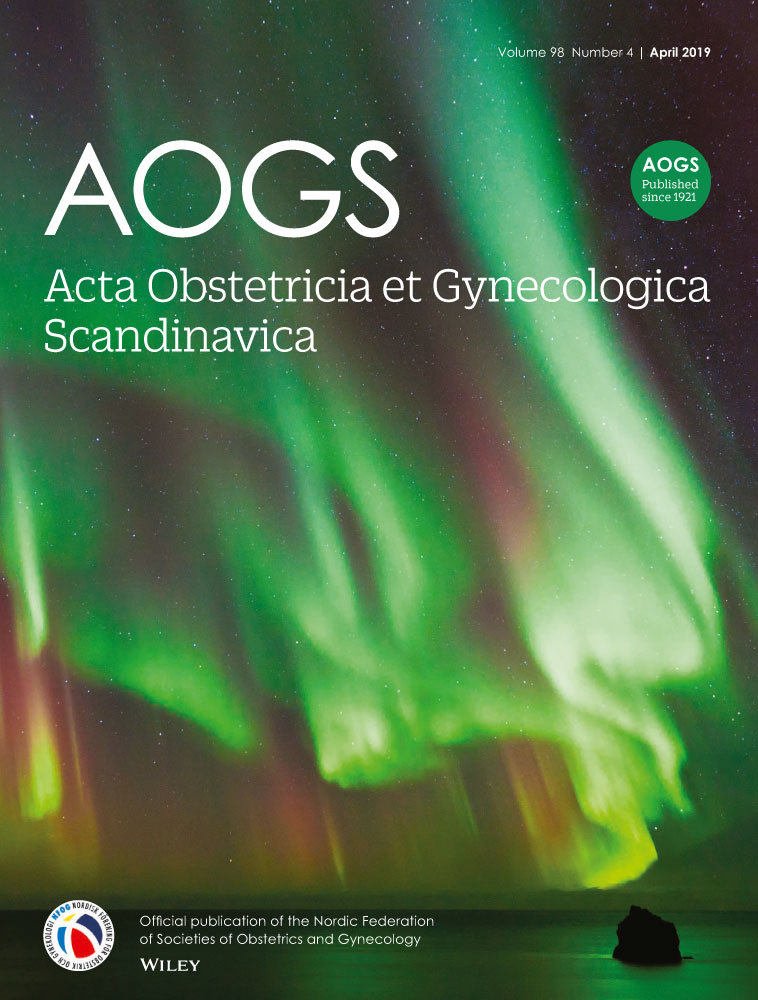
Systematic Review
Acupuncture-related therapies may have potential as an intervention for primary dysmenorrhea.
Yang, H., Liu, C.-Z., Chen, X., Ma, L.-X., Xie, J.-P., Guo, N.-N., Ma, Z.-B., Zheng, Y.-Y., Zhu, J., & Liu, J.-P.
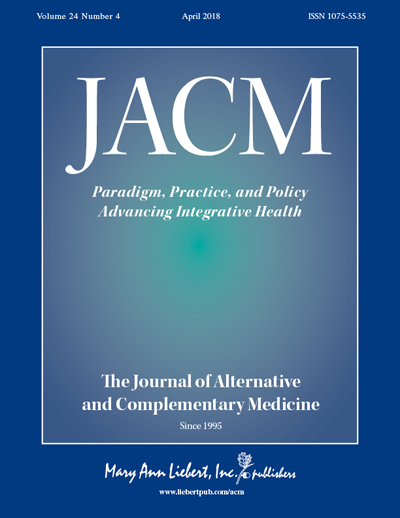
Systematic Review
Clinical studies have shown that acupuncture may have a beneficial effect on insomnia compared with Western medication.
Cao H, Pan X, Li H, Liu J.
Executive Summary
Write an executive summary in the form of a blog article on the topic of "Research into Chinese medicine treatment for Acupressure" summarising the research below and using language that can be easily understood by patients and avoiding medical jargon using a professional and caring tone of voice.
Write an executive summary in the form of a blog article on the topic of "Researched Chinese medicine treatments for Acupressure" summarising the research below in an objective and easy to understand way, and using language that can be easily understood by patients. Group the article into Chinese medicine treatments first, followed by nutrition and other treatments. Avoid using medical jargon and use a professional and caring tone of voice.
Write me a concise but easy to understand executive summary on the topic of "Chinese medicine treatments for Acupressure" based on the following research that I will give you. Your summary should be 2 paragraphs long in Australian English spelling and include references to the studies.
A Systematic Review published in 2022 in the journal Sleep Medicine found that Multiple acupuncture therapies, particularly acupoints catgut embedding, auricular acupressure + manual acupuncture, and electroacupuncture + acupoint application, significantly improve insomnia symptoms. In this research, a systematic literature search was conducted to extract data from 57 randomized controlled trials involving 4678 patients who underwent various acupuncture therapies for primary insomnia. The researchers independently screened the literature and performed a risk of bias assessment. Data from the trials were analyzed using R and Stata software, followed by an evidence assessment using the Grading of Recommendations Assessment, Development, and Evaluation system. Results showed that various acupuncture therapies, particularly acupoints catgut embedding, auricular acupressure or auricular acupuncture plus manual acupuncture, and electroacupuncture plus acupoint application, showed better effectiveness in improving insomnia, compared to the usual treatments. However, differences between the therapies were considered small or insignificant. The most common minor adverse events reported were hematoma, pain, headache, and bleeding.
A Randomised Controlled Trial published in 2021 in the journal Journal of Trauma Nursing found that Auricular acupressure may be a safe and effective technique for reducing burnout and secondary traumatic stress in healthcare workers. In this prospective randomized trial with an open, parallel-group design, participants were randomized to receive one of three interventions: auricular acupuncture, auricular seed acupressure, or auricular massage. Interventions took place over a period of 3 weeks at a 334-bed Level II pediatric trauma center. Using a pre-/posttest design, the researchers analyzed self-reported scores from the State-Trait Anxiety Inventory, the Professional Quality of Life scale, and the Caring Ability Inventory. The study found that auricular seed acupressure was associated with a reduction in burnout and secondary traumatic stress. Importantly, this effect remained even after adjusting for individual pretest scores. Attempts at achieving significant effects on anxiety levels, professional quality of life, and caring ability, however, did not yield any significant improvement. Overall, the data suggest that auricular acupressure is a very effective strategy for reducing work-related stress among health care staff.
A Systematic Review published in 2021 in the journal Evidence-Based Complementary and Alternative Medicine found that Moderate-quality evidence revealed an association between acupressure and greater pain relief compared with physical therapy. The systematic review and meta-analysis included 23 RCTs with 2400 participants with low back pain. Consistent with previous systematic reviews, moderate-quality evidence revealed an association between acupressure and greater pain relief compared with physical therapy. Although rated as very-low to low, poor quality evidence suggested that acupressure, with or without combinative acupuncture therapy, contributed to a greater amelioration of pain and functional disability from low back pain compared with usual care, tuina massage, or acupuncture. Trial sequential analysis results revealed that adequate studies supported the significance of the clinical response rate of acupressure, with or without combinative acupuncture therapy, compared to other treatments.
A Systematic Review published in 2020 in the journal Acupuncture in Medicine found that Acupressure offers promising pain relief and shorter labor duration during childbirth. Acupressure as an adjunct to standard labor procedures significantly reduces pain and shortens labor duration, according to a meta-analysis of 13 randomized controlled trials. The analgesic effect is immediate and lasts over 60 minutes. Acupressure demonstrated shorter first and second stages of labor. Its impact on Cesarean section rates was inconclusive, and medication use did not differ significantly. No adverse events were reported. While promising, further high-quality trials are needed to confirm these findings, indicating moderate evidence for acupressure's potential in labor pain management.
A Systematic Review published in 2020 in the journal European Journal of Integrative Medicine found that Auricular acupressure combined with acupuncture showed the highest effectiveness in reducing post-hemorrhoidectomy pain. A systematic review and network meta-analysis was used to identify the comparative efficiency of various acupuncture-related techniques for pain relief following hemorrhoidectomy. Searches were conducted across several databases, including MEDLINE, Embase, the Cochrane Library Chinese biomedical database, and China journal full-text database, from January 1, 1996, to February 1, 2020. The search targeted randomized controlled trials assessing the effectiveness of acupuncture and related techniques. The Cochrane risk of bias instrument and GRADE were used to determine the quality of the included trials, and the data were processed using a random-effects model. The study analyzed 107 randomized controlled trials, assessing the relative effectiveness of 40 treatments technique and 48 randomized controlled trials were used to analyze a responder rate. The results showed that Auricular acupressure plus acupuncture, acupuncture, other acupuncture techniques and auricular acupressure were significantly more effective than usual care. Furthermore, auricular acupressure plus acupuncture emerged as the most effective treatment. An additional round of analysis that focused on pain intensity was carried out, using 72 of the original randomized controlled trials. This study found that offering eight treatments had a higher effectiveness compared to usual care, with auricular acupressure plus acupuncture emerging as the most potent relief method.
A Systematic Review published in 2020 in the journal Cochrane Database of Systematic Reviews found that Acupuncture and acupressure for labor pain. This review of 28 trials encompassing 3960 women assessed the efficacy of acupuncture and acupressure in managing labor pain. Results indicate that acupuncture may enhance pain relief satisfaction and reduce analgesic use. Acupressure, compared to combined control or usual care, may decrease pain intensity. However, evidence quality varies, emphasizing the need for further high-quality research including sham controls, and exploring additional outcomes like sense of control in labor and overall childbirth satisfaction.
A Systematic Review published in 2019 in the journal JAMA Oncology found that Acupuncture and/or acupressure was significantly associated with reduced cancer pain and decreased use of analgesics. This study found a moderate level of evidence that acupuncture and/or acupressure was significantly associated with lower pain intensity in patients with cancer compared with a sham control, which suggests a potential for a combination of acupuncture and acupressure to help reduce opioid doses in patients with cancer.
A Systematic Review published in 2018 in the journal Cochrane Database of Systematic Reviews found that Acupuncture may reduce overall mood and physical PMS symptoms when compared to sham. Acupressure may reduce the number of women having moderate to severe PMS symptoms when compared to sham acupressure. The limited evidence available suggests that acupuncture and acupressure may improve both physical and psychological symptoms of premenstrual syndrome (PMS) when compared to a sham control. There was insufficient evidence to determine whether there was a difference between the groups in rates of adverse events.There is no evidence comparing acupuncture or acupressure versus current International Society for Premenstrual Disorders (ISPMD) recommended treatments for PMS, such as selective serotonin reuptake inhibitors (SSRIs). Further research is required, using validated outcome measures for PMS, adequate blinding and suitable comparator groups reflecting current best practice.
A Systematic Review published in 2018 in the journal Journal of Traditional Chinese Medicine found that Stimulating acupoints had positive effects on childhood cough variant asthma and was a relatively safe treatment. In the study, we found out that the therapeutic effect of stimulating-acupoint group was much better than that of control group in the treatment of childhood cough variant asthma, and the difference was statistically significant. A major strength of our review was that our meta-analysis of 13 studies involving 1,112 participants, the enlarged sample size and accumulating evidence provided more reliable estimates. Furthermore, the original trails included in our study were all prospective, which reduced the selection bias and likelihood of recall bias. The results indicate that stimulating acupoints has a positive effect on cough variant asthma in children, leading to the decreased recurrence rate and cough duration as well as the reducing of eosinophils and IgE. However, the poor methodological quality of the trials lack of persuasiveness, so high quality RCTs with more useful indicators are needed in the future studies.
A Systematic Review published in 2018 in the journal Evidence-Based Complementary and Alternative Medicine found that Acupuncture has similar efficacy compared to pharmacotherapies for acne vulgaris, however acupuncture interventions reported less adverse effects and may be a treatment option. There was no statistical difference in the efficacy of acupuncture compared to pharmacotherapies for acne vulgaris; however acupuncture interventions reported less adverse effects. Poor methodological quality of trial design and lack of consistent reporting of outcome measures from some trials were found in this review; therefore results should be interpreted with caution. Future trials should include rigorous methodological design and reporting should follow standard reporting conventions such as CONSORT and STRICTA. Quality of life measures and further understanding of the mechanisms of acupuncture on acne should also be considered for future studies.
A Systematic Review published in 2018 in the journal Sleep Medicine Reviews found that The results showed that even fragile populations such as the elderly and dialysis patients can benefit from acupressure to improve sleep quality. Thirty-two eligible randomized controlled trials of moderate to high quality which employed polysomnography, actigraphy, or self-assessment sleep quality tools were included. We conducted a meta-analysis using a random effects model with the Pittsburgh sleep quality index (PSQI) as the primary outcome measure (968 adult patients, 13 trials) for trials investigating the effects of traditional Chinese medicine acupressure compared with standard and sham treatments. We performed subgroup analyses to detect sources of heterogeneity, identify the use of acupoints in different populations and explore the contributions of PSQI domains to the total score change. Comparison with the sham group (7 trials with 385 patients) yielded low heterogeneity and an overall effect of 13%–19% improvement in the PSQI score. Based on data from four trials (n = 250), sleep latency and sleep duration were most affected. No adverse effects were reported in any of the reviewed trials.
A Systematic Review published in 2017 in the journal Cochrane Database of Systematic Reviews found that Acupuncture and acupressure show potential for improving cervical readiness and certain birthing outcomes, their impact on reducing caesarean section rates remains inconclusive. The study evaluates the efficacy and safety of acupuncture and acupressure for third-trimester cervical ripening or labor induction. Of the 22 trials analyzed, acupuncture's effect on caesarean sections remains inconclusive, while electro-acupuncture appears to influence birthing outcomes like cesarean section rates, instrumental vaginal birth, and spontaneous vaginal birth. The quality of evidence varies, and more comprehensive trials are required to establish their effectiveness and potential safety.
A Systematic Review published in 2016 in the journal Complementary Therapies in Medicine found that SP6 acupressure's effectiveness for primary dysmenorrhea relief, indicating trained personnel-administered acupressure reduced pain immediately and up to 3 hours post-intervention The review initially identified 72 potential studies, but after eliminating duplicates and conducting screenings, only 13 studies were considered for inclusion. The review is the most extensive to date on SP6 acupressure for primary dysmenorrhea (PD), indicating its effectiveness when administered by trained personnel for immediate pain relief, reduction of anxiety, and potential general health improvement. However, the evidence remains limited and mostly consists of low-quality trials. Patient-administered acupressure might be beneficial with extended monthly application, though high-quality trials are required for such recommendations. The study highlights the need for future trials to specify diagnostic criteria for PD, given the lack of clarity in the included studies. Despite limitations, the findings suggest that self-administered acupressure holds promise for relieving PD symptoms.
A Systematic Review published in 2016 in the journal Cochrane Database of Systematic Reviews found that The review found limited consistent evidence supporting the effectiveness of acupuncture for relieving menstrual pain compared to sham treatments or other interventions. This passage provides a summary of the main results of a review on the effectiveness of acupuncture and acupressure in managing primary dysmenorrhoea (menstrual pain) in women. The review includes 42 trials involving 4640 women. The primary outcome, which is pain relief, showed no consistent difference between women receiving acupuncture and those receiving a sham control (simulated treatment). However, limited evidence suggested a benefit for acupuncture compared to NSAIDs, Chinese herbs, and other treatments. Acupressure had limited evidence of benefit compared to a sham control. Secondary outcomes, including menstrual symptoms and quality of life, did not consistently show a benefit from acupuncture. The trials had various limitations, such as incomplete reporting of outcomes, short follow-up periods, and variations in eligibility criteria. The quality of reporting was generally poor, and many trials were at high risk of bias. The overall quality of evidence for pain relief and menstrual symptoms was considered low. Other reviews on this topic found promising evidence for acupuncture, but results were influenced by methodological flaws in the trials.
A Systematic Review published in 2015 in the journal Acupuncture in Medicine found that Acupressure seems to be effective in providing immediate relief of pretreatment anxiety among adults, and has a medium effect size. Of 39 potentially relevant studies, seven RCTs met the inclusion criteria for review while five studies met the criteria for meta-analysis. All studies reported the positive effect of acupressure on relieving anxiety from the anticipation of surgery or treatment. EX-HN3 (Yintang), HT7 (Shenmen) were the commonest points selected and two studies used bilateral points. The acupressure procedure was generally well reported and studies had a low risk of bias. The combined results of the five trials showed a greater overall reduction in anxiety in the acupressure group than in the sham controls.
A Systematic Review published in 2015 in the journal Journal of Acupuncture and Meridian Studies found that Acupressure showed evidence of pain relief while acupuncture improved both the mental and the physical components of quality of life associated with primary dysmenorrhea. This study involved three reviewers who dependently and independently performed study selection, quality assessment, and data extraction and management. Several interventions indicated statistical significance. Insights into the efficacies of the interventions were identified in correlation to themselves and with one another. The systematic review highlighted promising evidence in the form of studies done to establish the effectiveness of acupuncture and acupressure in the management of primary dysmenorrhea. However, the results were limited and had methodological flaws. The review and the meta-analysis indicated that acupressure significantly reduced the pain associated with primary dysmenorrhea and that acupuncture improved both the physical and the mental components of quality of life. The magnitude of these effects may or may not be clinically worthwhile, but as the costs and the risks of these interventions is low, these results may be clinically useful.
A Systematic Review published in 2014 in the journal Oncology Nursing Forum found that Although results are inconclusive, acupuncture and acupressure tend to be effective in relieving cancer related fatigue, with the former producing a greater improvement. Although results are inconclusive, acupuncture and acupressure tend to be effective in relieving CRF, with the former producing a greater improvement. Future research is recommended to contribute further evidence. Implications for Nursing: Nurses should know about the relative effectiveness of acupuncture and acupressure in the management of CRF to educate and support their patients.
A Systematic Review published in 2013 in the journal Evidence-Based Complementary and Alternative Medicine found that Our findings suggest that acupressure at the SP6 acupoint may provide more effective pain relief than that of control treatment. This is the first systematic review to evaluate the effectiveness of acupuncture or acupressure at the SP6 acupoint for relieving pain associated with primary dysmenorrhea. Our findings suggest that acupuncture at the SP6 acupoint may not be more effective than acupuncture at an unrelated (GB39) acupoint for the relief of dysmenorrhea-associated pain (assessed using a VAS). In contrast, our findings suggest that acupressure at the SP6 acupoint may provide more effective relief from dysmenorrhea-associated pain than control interventions. Clearly, there is a need for high-quality, randomized controlled trials to clarify the effectiveness of acupuncture/acupressure at the SP6 acupoint for the treatment of pain resulting from primary dysmenorrhea.
A Systematic Review published in 2013 in the journal Evidence-Based Complementary and Alternative Medicine found that Limited evidence supporting the benefit of acupressure in alleviating menstrual pain and reducing symptoms. The passage presents the results of a systematic review on the effectiveness of acupressure in treating primary dysmenorrhea, a condition characterized by painful menstrual cramps. The review started with 224 potentially relevant records, ultimately including 8 trials involving 800 participants. All trials used a parallel design with varying control interventions. Six trials employed no treatment controls, while two were single-blind clinical trials using placebo acupressure. The research locations varied, with the largest trial conducted in China, and the smallest in Iran. The analysis was performed individually for each trial using special software. The trials used fixed sets of acupressure points and administered acupressure for different durations (one, two, or three menstrual cycles). Pain relief was assessed using Visual Analogue Scale (VAS) in six trials. The risk of bias assessment indicated high risks in various domains across the studies. In terms of effects, acupressure demonstrated an improvement in pain relief compared to placebo or rest control, and it was also more effective than Ibuprofen in one aspect. However, for improvement in symptoms, acupressure did not consistently outperform placebo acupressure or rest control, with mixed results across different time points. Overall, the evidence for the effectiveness of acupuncture in treating primary dysmenorrhea is considered limited due to methodological flaws in the trials, necessitating well-designed RCTs for more conclusive results.
A Systematic Review published in 2010 in the journal Acta Obstetricia et Gynecologica Scandinavica found that Acupuncture-related therapies may have potential as an intervention for primary dysmenorrhea. This passage provides a systematic review of studies on acupuncture-related therapies for primary dysmenorrhea (menstrual pain). The review included 32 trials with a total of 3,910 patients. These trials compared acupuncture, acupressure, and moxibustion to various control treatments. The results showed conflicting findings regarding the effectiveness of acupuncture-related therapies, with one trial suggesting acupuncture was significantly more effective than control groups. However, the review also identified several limitations in the trials, including issues with study design, outcome measures, trial heterogeneity, and potential publication bias. The authors suggest that while acupuncture-related therapies may hold promise for treating dysmenorrhea, further well-designed trials are needed to provide more definitive evidence. They also recommend improvements in study methodologies and the application of international outcome measures for more accurate and comparable results.
A Systematic Review published in 2009 in the journal The Journal of Alternative and Complementary Medicine found that Clinical studies have shown that acupuncture may have a beneficial effect on insomnia compared with Western medication. Forty-six (46) randomized trials involving 3811 patients were included, and the methodological quality of trials was generally fair in terms of randomization, blinding, and intention-to-treat analysis. Meta-analyses showed a beneficial effect of acupuncture compared with no treatment and real acupressure compared with sham acupressure on total scores of Pittsburgh Sleep Quality Index. Acupuncture was superior to medications regarding the number of patients with total sleep duration increased for >3 hours. However, there was no difference between acupuncture and medications in average sleep duration. Acupuncture plus medications showed better effect than medications alone on total sleep duration. Similarly, acupuncture plus herbs was significantly better than herbs alone on increase of sleep rates. There were no serious adverse effects with related to acupuncture treatment in the included trials.
Moderation Tools
Topic
Sign In
Users not signed in are limited to viewing the 5 most recent items of content.